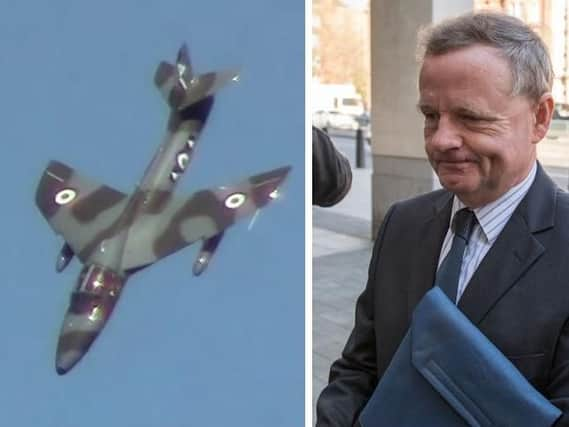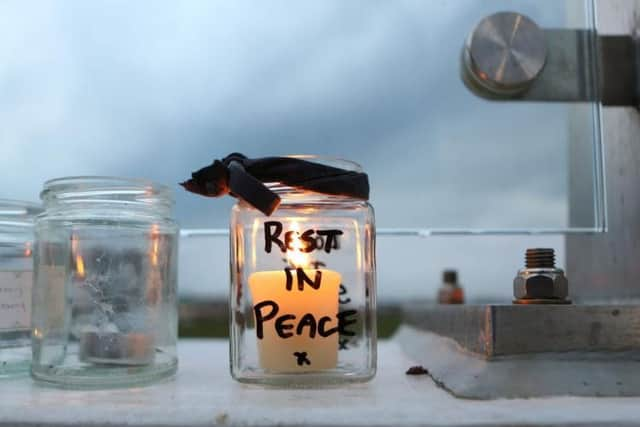These 12 errors by Shoreham Airshow pilot Andy Hill show he was cognitively impaired, expert says


Aviation safety expert Dr Stephen Jarvis told the Old Bailey today that Hill made up to 12 errors in just 23 seconds.
When asked what caused these errors, Mr Jarvis said the only explanation that satisfies him was that Hill suffered a form of cognitive impairment.
Advertisement
Hide AdAdvertisement
Hide AdHill, 54, of Standon Road, Buntingford, is standing trial charged with 11 counts of manslaughter by gross negligence. He denies the offices.


He was flying a vintage Hawker Hunter jet at the airshow in 2015 when it crashed onto the A27, leading to the deaths of 11 men.
This morning the trial heard from another expert who said there was 'no indication' that Hill had lost consciousness during the flight, despite his claim to a paramedic.
'Cascade of errors' towards the end of Andy Hill's display
Dr Jarvis said the was a 'cascade of errors' towards the end of Hill's flight in the Hunter.
Advertisement
Hide AdAdvertisement
Hide AdHe added: "At that part of the flight errors start to be made and quite a lot of them."
Dr Jarvis says Hill's decision to cut the RPM of the aircraft was 'odd'.
"It is the last thing you would expect a pilot to do at this point."
Up to 12 errors made in quick succession, expert says
Dr Jarvis told the court: "What we have got here is a whole set of errors all moving towards the tragedy.
Advertisement
Hide AdAdvertisement
Hide Ad"I would say it is definitely seven or eight, possibly rising to 12, all in a 22-23 second period.
"[It] is more remarkable to make that many errors in that short space of time."
Looking at Dr Jarvis' witness statement, defence barrister Karim Khalil QC read out the list of 12 errors he believes Andy Hill made:
1. "Power reduction after point X [in the flight]
2. "Continuing to turn beyond that inbound track
3. "Failure to notice or act upon the low airspeed
4. "Pitch oscillations
5. "Entering the manoeuvre too early, away from the crowd
6. "Inappropriate pull up [into the loop]
Advertisement
Hide AdAdvertisement
Hide Ad7. "Applying left roll input from early in the manoeuvre
8. "Reduction in power in the first part of the vertical
9. "Applying and holding further left roll input from the vertical
10. "No escape manoeuvre
11. "Failure to eject
12. "General position of the aircraft."
Dr Jarvis told the court that cognitive impairment would not entirely stop Hill being able to fly the plane.
Advertisement
Hide AdAdvertisement
Hide Ad"Your consciousness is not required for this sort of movements that are being made in those last 20 seconds.
"If cognitive impairment were the catalyst in the errors made at Shoreham, once impairment had begun to set in one would expect to see the display continuing but getting a lot less accurate."
He said this would result in an increase in the number of errors being made.
Dr Jarvis: Only cognitive impairment satisfactorily explains errors
Advertisement
Hide AdAdvertisement
Hide AdDefence barrister Mr Khalil asked him: "Is there any other explanation that satisfies you for these errors other than a form of cognitive impairment?"
Dr Jarvis replied: "No not really."
He was also asked about the prosecution's assertion that the tragic crash was a result of 'extremely bad piloting' and not cognitive impairment.
Dr Jarvis said: "I can’t really accept that.
"Obviously Mr Hill was very experienced as a pilot and it just doesn’t seem credible to me."
Prosecutor Tom Kark QC suggested that the errors were in fact linked, and that the common factor was Andy Hill 'not flying terribly well'.
Dr Jarvis said: "As I said I pretty much ruled that factor out."
The trial continues.